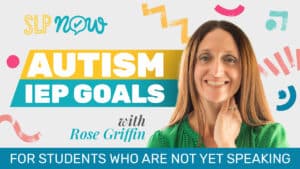In recent years, the prevalence and awareness of Auditory Processing Disorders (APD) has skyrocketed. As a result, Speech-Language Pathologists (SLPs) are receiving more and more referrals to evaluate and treat children who have APD in outpatient clinics and in schools.
So… What is APD anyway?
According to the American Speech-Language-Hearing Association (ASHA), “APD refers to how the central nervous system (CNS) uses auditory information.” It is also defined as being “a problem or dysfunction of the auditory system specifically the central auditory, or the portion of the system that runs from the ear to the brain” (Bellis, 2003).
Individuals who have APD do not have ear-based problems such as hearing loss or deafness; rather, they have difficulties with processing information auditorily. Individuals should be careful not to confuse APD with higher-level thinking or attention problems such as intellectual disabilities, autism, or ADD/ADHD. In some cases, however, APD may co-exist with ADHD or other disorders.
More specifically, individuals who have APD demonstrate deficits in the following areas: auditory discrimination and pattern recognition, sound localization, temporal resolution, masking, integration, ordering, and auditory performance with competing signals. In order to receive a diagnosis of APD, deficits must be observed in one or more of the before-mentioned areas. The diagnosis of APD can be made only be an audiologist following an extensive evaluation consisting of several tests and assessments. Additional characteristics of APD might include:
- Weaknesses in expressive language, receptive language, and/or literacy skills
- Difficulty listening in background noise/environments where there is competing noise
- Trouble with following directions and/or recalling information that was heard
- Poor organization skills
- Frequently asking “what?” or “huh?”
- Needing more time to process information/slower processing speed when answering questions
Teachers and parents of children who have APD might report concerns with the child’s ability to:
- Discriminate between short and long vowel sounds
- Blend (sound out) unfamiliar words
- Combine parts of words to make a whole word
- Recall the sounds that specific letters make (letter-sound correspondence)
- Identify rhyming words
- Read sentences/passages with the appropriate rate, prosody, and fluency
- Generalize learned reading strategies/patterns of sounds from one moment to the next (working memory)
- Perceive similarities/differences between sounds
The Academic Challenges Students with APD Face
School-aged children may have challenges academically due to their diagnosis of APD.
Some of these students may be seen as behaviorally challenged, as APD can often be confused with other attention deficit disorders such as ADHD or ADD. Students who have APD might be enrolled in additional services through their schools, including speech-language therapy, occupational therapy, reading intervention/support, and/or special education services. However, it should be noted that not all children who have APD will qualify for additional services that are offered.
In order to participate in a regular classroom environment at school, many students with APD will likely benefit from having some accommodations in place to help them succeed. Some of these students may qualify for an IEP (Individualized Education Plan) or a 504 Plan through their school system.
List of Accommodations for Students Who Have APD
A non-exhaustive list of some possible accommodations for students with APD might include:
- Preferential seating at the front of the classroom during instruction
- The teacher’s face should be clearly visible to the student and the teacher should be away from competing noise sources
- Individual seating in a quiet, separate area for independent work and/or testing
- Improve acoustic access by modifying the classroom/changing materials
- Add carpet, room dividers, tennis balls on the legs of chairs, regular pencils instead of mechanical pencils/pens to reduce “clicking” sounds
- Reduce background noise
- Provide a note-taker (possibly for older students)
- Use “guided notetaking”- teachers can help students learn to identify key information in a lecture and organize it in written notes
- Notetaking during class requires jumping between auditory and visual modalities, which can be distracting for students who have APD
- Allowing the student to get notes from another child or compare notes with the teacher may be a better solution
- Repeat or rephrase information during lectures/classroom instruction
- Make frequent checks for student understanding (check points)
- Ask the student to rephrase what has been said (sometimes the student can repeat verbatim, yet still not comprehend the message)
- Redirect discreetly and gently
- The teacher might have a “secret sign” or “secret signal” with the student who has APD (teacher waves her finger around, which signals the student to look around to see what the other students are doing)
- Extended time on assignments/tests
- Utilize visual aids, such as a planner, to help organize assignments, thoughts, important dates, etc. and to make lists of academic tasks to be completed
- Encourage the student to maintain a clutter-free work area to reduce distraction and stress; clear/straighten the student’s work area at the end of every day
- Try to avoid auditory fatigue
- Allow the student to use noise-cancelling headphones during individual work or testing
- Allow for listening breaks/break breaks periodically throughout the school day
- Teach the student to engage in self-monitoring
- The student might eventually learn to ask himself/herself questions like “do I understand this?” or “what do I need clarification/help with?”
- “Pre-teach” new information and vocabulary before the lecture
- Before a new topic is discussed, the teacher should provide the student with key vocabulary and critical concepts in writing
- Students with APD demonstrate challenges with filling in the missing pieces/information without knowing the new vocabulary/key points first
- Use positive reinforcement
- Teachers should acknowledge strong effort and hard work in the student regularly, which could lead to more motivation, higher self-esteem, etc.
- Highlight key information when reading passages/books to refer back to
- Teach the student to engage in and practice auditory memory strategies
- Chunking information — breaking down long messages or lists into smaller components and grouping similar concepts/objects together
- Elaborating on what you heard — use of analogies and acronyms
- Rehearsing/verbally repeating information aloud to yourself
- Organizing — outline and relate to what you already know)
- Visualizing — make a visual picture in your mind
- Making acronyms/use first letter of words (JFMAMJJASOND for months of the year)
- Paraphrasing – use different words to summarize what you heard
In certain scenarios, some students might benefit from the use of artificial intelligence (AI) resources to support their academic progress. A non-exhaustive list of some possible AI accommodations for students who have APD might include:
Reading:
- Read Along by Google
- Recommended for ages 5-12
- Free, but requires a Google/Gmail account
- AI listens and gives positive feedback
- Microsoft Reading Coach
- AI listens to kids read and provides guidance on mispronounced words and fluency
- Provides reading progress reports for teachers and parents
- Free, but required a Microsoft email account
- Rewordify
- Paste complex reading passages, and the program will simplify vocabulary and make passages easier to read for emerging readers
- Teaches vocabulary and provides comprehension tasks for older readers
- Free for students, teachers, and parents
Classroom Accommodations:
- Microsoft Teams Live Transcription and Google Meet Captions
- Live transcription of verbal speech to written text for notetaking
- Help students who need to process information visually and need support with note taking
- No additional personnel support required
- Google Docs (Chrome Books)
- Voice in Speech to Text
- Font and Contrast Customization
- Arial and Lexend fonts are easier to read
- Chrome extensions: High Contrast and Grayscale
- High contrast text is visually beneficial for struggling readers
- Speak Feature
- Reads highlighted text aloud to students
- Organization Tools
- Headings, bulleted/number lists and Table of Contents features
- Helps organization for clear structure
- Can be used offline
- Helps with limited internet access
- Headings, bulleted/number lists and Table of Contents features
- Google Docs (Chrome Books)
- Live transcription of verbal speech to written text for notetaking
Conclusion:
Students who have APD can be successful in a classroom setting if given the appropriate services or accommodations. No student with APD is the same; different strategies will be used for each individual student, and there is no one treatment approach that is appropriate for all children with APD. School-based SLPs can support teachers by providing useful strategies and techniques to help their students with APD to be successful in the classroom. SLPs can also provide individual speech-language intervention for students with APD so long as an underlying language disorder is present. Some students with APD may respond well to intervention and show improvement with the use of compensatory strategies, while others may seem to deal with these deficits forever. However, with the appropriate tools and use of individualized compensatory strategies, students with APD can learn to utilize their strengths in life as opposed to focusing on their areas of weakness.
Author Bios
Marilyn Owens has been with the University of Tennessee Health Science Center (UTHSC) Department of Audiology and Speech Pathology (ASP) since February 2022, serving children and adults who are deaf or hard of hearing and supervising ASP graduate students. Mrs. Owens provides aural/oral evaluations, auditory training, and aural rehabilitation treatment to individuals who use cochlear implants and hearing aids. She also works with children who have more complex communication disorders who use AAC (Alternative and Augmentative Communication) and children who have Auditory Processing Disorders (APD). She is also fluent in American Sign Language (ASL).
Jestina Bunch has been with the University of Tennessee Health Science Center (UTHSC) Department of Audiology and Speech Pathology (ASP) since August 2015. Her specialty is serving children and adults who are deaf or hard of hearing. She also supervises ASP graduate students. Mrs. Bunch provides aural/oral evaluation, auditory training, and aural rehabilitation treatment to individuals who use cochlear implants and hearing aids. She also has extensive experience working with individuals with complex communication disorders and children/adolescents who use AAC (Alternative and Augmentative Communication).
Resources/References:
- https://www.asha.org/public/hearing/understanding-auditory-processing-disorders-in-children/
- Bellis, T.J. (2003). When The Brain Can’t Hear: Unraveling the Mystery of Auditory Processing Disorder. New York, NY: Atria Books.
- Bellis, T.J. (n.d). Understanding Auditory Processing Disorders in Children. In American Speech-Language-Hearing Association.






Leave a Reply